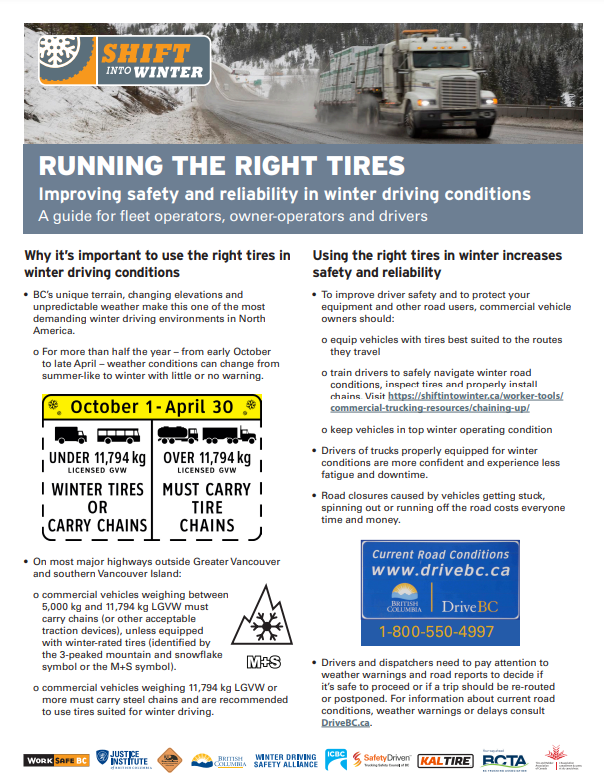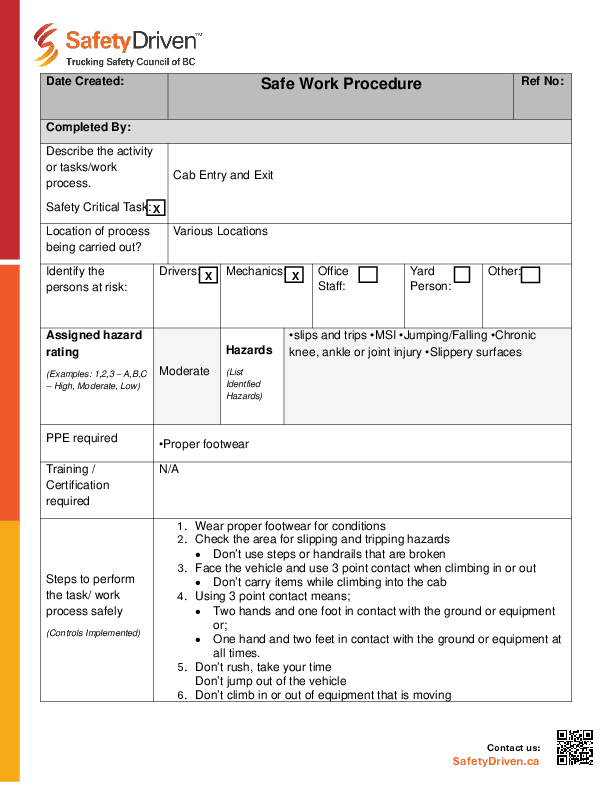
National Safety Code – Having a Process for Documentation Requirements
Some practical tips to make it easier for you.
The National Safety Code has sixteen standards that have to be followed by National Safety Code (NSC)-compliant carriers. Documentation has to be maintained, including having a process for documenting. Getting the Hours of Services logs submitted and trip inspection reports audited on time are part of the requirements of the NSC.
There is also a requirement to have a process for the documentation flow. This requires the documents be processed and viewed by only the required personnel within the company. The Freedoms of Information and Privacy Protection Act are also very important when processing information for personnel. Paperwork has to be kept under lock and key and electronic logs cannot be accessed by anyone other than positions within the company that are required to have access. Any employee can always see what is on their file and must know when anything is being added to the file, including the following
– A new drivers abstract
– Accident reports (including all photos, information from the investigations, the outcome of the investigation, police reports associated with the accident)
– Letters of discipline
– Letters of commendation
– Any driver’s licence information
– WorkSafe reports
– All training documents for the driver
– And any other reports that have to do with the driver
A driver is not permitted to see what is on any other driver’s file for any reason.
The files for the drivers must have a process and this process must be recorded and available for viewing if there is an NSC audit.
The processes do not have to be complicated, but must outline how the files and NSC compliance will be:
– Filed
– Audited (internally)
– Dated for purging (some files)
– Reviewed by the NSC department
– What to do when a driver file is less than ideal (Possible suspensions, revocations, cancellations)
– How the Hours of Service and Trip inspections reports are reviewed and audited
Most carriers do a reasonable job of collecting the required compliance from the driver and even edit the file or perhaps send them out for editing. However, is the process recorded?
For example, if the driver’s Hours of Services logs are reviewed by a third party, what is the process? It can be easily explained, but if questioned could the carrier actually produce a written procedure for this function? The procedure must also outline the fact that the Hours of Service logs or record-keeping system are being completed and the timeframe as this is a requirement under Division 37.
The Hours of Service logs must be received within twenty days of when the log was completed and must be filed within thirty days. This gives a short time for the third party to actually review the reports and get them back to the carrier. Provincially- and federally-regulated companies use electronic logs and can normally access reports that outline any deficiencies or errors by the driver. This report is a valuable tool for NSC compliance and record keeping. This is also a process that must be available for an audit.
The documentation for the NSC can be made easy by having a process that almost anyone can follow. Writing the process can take some time but remember to keep it short and simple. Remember that the documentation must be protected and secured. The process for maintaining the documentation must also be developed and updated when required.
Carriers must develop a process for file keeping and for procedures around recording, keeping, reviewing, and sharing said files. These processes must be written somewhere. This may seem complex and confusing but remember this: everything that has to be done for the NSC must be recorded. Some examples of needed processes and procedures:
– Hiring policy
– Reference checks
– Obtaining a driver abstract prior to hiring and annually afterward (minimum)
– Driver assessments or competency checks
– Trip inspection training for the drivers for both pre-trip inspections and post trip inspections
– Drivers submitting documentation including the timeframes required for the documents
– Vehicle records
– Accidents
– Inspections
– Maintenance
– Modifications
– Recalls and recall corrections
– Roadside inspection reports
All the files and documentation that are listed must be part of the safety plan for the company. Remember the plan will have four distinct areas:
– Drivers
– Vehicles
– Hours of Service
– Safety requirements
Always keep the plan simple. When a procedure has been changed, take the time to record the updated procedures. The procedures are going to keep the company current and the documentation up-to-date. Remember it is always easier to keep up than to catch up.
For more information about the National Safety Code and NSC Program Course registration visit the BC Trucking Association.
Latest Resources
Running the Right Tires
Road Safety at WorkUse this guide for fleet operators, owner-operators, and drivers to help improve safe ...
Safe Work Procedure: Cab Entry & Exit
An Employer can make use of a safe work procedure (SWP) by training new and existing ...

